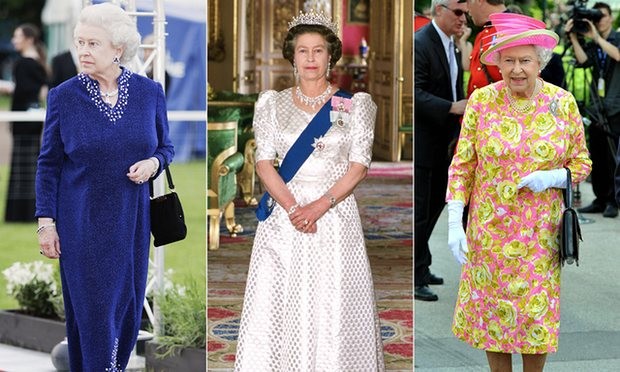Queen Elizabeth turns 90 this month, gives power-dressing statement on message through fashion

When Princess Elizabeth was two-and-a-half-years old in November 1929, John Logie Baird staged his first experimental television broadcasts in London. The flickering pictures were black and white, consisting of only 30 lines of definition. When she was 10, the BBC became the world’s first broadcaster to provide a regular scheduled television service, taking cameras to the coronation of King George VI in May 1937.
So it was that the future Queen became the first monarch to live her life in the public eye, growing up under the watchful lens of the ever-evolving media, relaying her image around the world for global scrutiny.
This month, in celebration of the monarch’s 90th birthday, a series of three exhibitions, Fashioning a Reign: 90 Years of Style from The Queen’s Wardrobe, will showcase more than 150 outfits from her childhood to the present day. From a young age, she was groomed to reinforce all the messages of the monarchy via her appearance. Throughout her years as a princess, as heir to the throne and then as Queen Elizabeth II, her wardrobe has been her armoury, designed to purvey power and regal dignity as a national figurehead.
Constituting the largest display of the Queen’s clothes, the exhibitions chart nine decades of dressing for the world stage, mapping out not only her personal taste but reflecting the strategically styled working uniform of the world’s most photographed woman. Cultural considerations, religious restrictions, climate and many other factors come in to play in this incredible archive.
“The Queen and Queen Mother do not want to be fashion setters,” the court couturier Sir Norman Hartnell once remarked. “That’s left to other people with less important work to do. Their clothes have to have a non-sensational elegance.”
The Queen has, without doubt, developed a sartorial handwriting that is intrinsic to her identity, using clothes and accessories to communicate in an era defined by photography and film.
“She is power dressing in extremis,” comments the royal historian Hugo Vickers. “If she emerges from a parliament building somewhere in the world, or is meeting Commonwealth leaders, she has to be in pale lemon or bright coral or some other bold colour because she must stand out from the crowd. Even her choice of hats is strategic, to ensure her face is fully visible but framed perfectly. I think she uses her wardrobe very, very effectively to communicate with the world.”
In many ways, the Queen has set the agenda for other royals and high-profile female political figures in need of a style persona that delivers stature and poise. One only has to look at Margaret Thatcher, Angela Merkel, Nicola Sturgeon and Hillary Clinton to see echoes of the colour-blocked, feminine tailoring used to great effect by the Queen.
Those suits and co-ordinating dress and coat ensembles are used to convey subtle or overt messages: when the Queen visited Ireland she wore green to flatter her host nation, and she’s adept at mirroring the hue of a national flag or emblem when on tour or hosting a state visit. Politicians, of course, use a palette to send a different missive: it’s hard to think of Thatcher in anything but Tory blue, a consistent reinforcement of her political allegiances, if ever one were needed.
“Every woman in power today has grown up seeing clothing as a powerful force in popular culture,” says the fashion historian Bronwyn Cosgrave. “The savvy ones know how to utilise their image to send out strong messages. Only this week, Hillary Clinton was in Harlem, wearing a black leather jacket and pearls: a shrewd, calculated choice which oddly softened her look far more than those pant suits ever will. Harlem has always been a youthful, ‘leather’ kind of borough of New York, and she has to woo the younger voter that Bernie Sanders is attracting, and I think it worked. It was true power dressing.”
Indeed, the 21st century has redefined power dressing for western women on the world stage, reflecting a seismic shift in our society. Ironically, the culture of “dressing down” has infiltrated the corridors of power in Europe and the US, making the elite more accessible and “of the people”.
It is in stark contrast to styles adopted by Arab royals, “who have a culture of extravagance and are more at liberty to explore the world of haute couture in the 21st century”, says Cosgrave. Saudi princess Deena Al-Juhani Abdulaziz owns two luxury designer boutiques in Doha and Riyadh and dresses with the chic, creative style that befits a modern royal. Sheikha Mozah bint Nasser Al Missned of Qatar is said to be behind the investment vehicle that bought Valentino in 2012 and has shaped a unique blend of eastern and western aesthetics and sensibilities in her wardrobe which combines turbans, dark sunglasses and opulent jewels with demure but dazzling couture for day and evening.
The death of Nancy Reagan last month was a symbolic passing of an era when American first ladies were seen to be profligate spenders. Like Jackie Kennedy before her, Reagan believed style was a powerful weapon in the White House and became so closely associated with red suits in her bespoke wardrobe that the particular shade was dubbed “Reagan Red”. For her Hollywood husband’s inauguration in 1981, the petite former actress wore a suit and evening ensemble costing $25,000 – “more than twice my annual salary”, wrote one disgruntled reader to The New York Times. Her patronage of American designers such as Bill Blass, Oscar de la Renta and Carolina Herrera certainly elevated not only her own style status, but theirs too, sealing her legacy as someone who shaped American fashion’s global status.
Today, Michelle Obama has adopted a more relaxed approach, wearing a highly polished version of the sort of clothes many middle-class working mothers have in their closets. On the recent presidential tour of Cuba and Argentina, she wore off-the-peg designer dresses with bare legs and an approachable “I’m just like you” smile. Still, some of her frocks came with a price tag of a few thousand dollars, but that’s far from the eye-watering couture costs of her predecessors. And the diplomatic messaging was strategic, acting as an ambassador for home-grown designer Tory Burch and Herrera (a Venezuelan-American), while nodding to the watershed in US-Cuban relations by wearing Narcisso Rodriguez, an American designer of Cuban descent.
This nuanced diplomacy has its roots in the early years of the Queen’s reign, with her Coronation gown, designed by court couturier Hartnell and featuring numerous motifs from the UK and all the Commonwealth nations. On tour she consistently wears brooches with emblems of a host nation, or will commission a dress with appropriate motifs. She has developed a subliminal but eloquent language through clothing and accessories.
“There is very definitely an evolution of dressing that the Queen has applied throughout the 20th and early 21st century to the best effect,” says Caroline de Guitaut, curator at the Royal Collections Trust charged with putting together the three exhibitions which, though closely linked, document different elements of the Queen’s wardrobe. “One looks through the lens of history when you cast your eyes back to the era when someone was wearing certain pieces. When Elizabeth came to the throne as a young queen, it was the heyday of British couture, and she adopted her mother’s trusted designers as her own, turning to Norman Hartnell and Hardy Amies to make the right attire for her, at the right level of glamour, which was expected of her in that era.”
Favouring fairy-tale gowns of lavishly embroidered duchesse satin, the young Elizabeth amplified the exuberance of the postwar “new look”, introduced by Paris-based Christian Dior in 1947. Through her public wardrobe she communicated the hope of a happy ending while fulfilling visions of regal splendour.
Around the same time, a young American starlet, Grace Kelly, married Prince Rainier of Monaco, bringing her unique Waspish glamour to the Mediterranean principality. As Europeans and Americans fell in love with Hollywood heroes and leading ladies, real royals needed to sustain a level of opulence to realise the fairy-tale fantasies of their people.
However, it is likely that the Queen will be the last British monarch to wear pure couture in her public duties. We see the Duchess of Cambridge and royals such as Australian-born Princess Mary of Denmark, former news anchor Queen Letizia of Spain and Crown Princess Mette-Marit of Norway wearing mass-produced, high-street attire both when off duty and for certain engagements. But they are still expected to conform to court dress codes when it really counts, wearing high-octane, bespoke gowns for state banquets and formal receptions.
“As members of the public, we want our figureheads and leaders to look a certain way,” says the personal stylist Elika Gibbs, who counts a number of royal and political figures as clients. “There is so much that goes into creating these wardrobes, so they look effortless but work hard to send the right message. And they have to be practical, too, so there are no embarrassing wardrobe malfunctions when descending the steps of a plane, exiting a car, or leaning over to sign a document, for example. All these women will be seen and photographed from every angle, and need to ensure they dress accordingly.”
Fashioning a Reign: 90 Years of Style from The Queen’s Wardrobe is at the Palace of Holyroodhouse, Edinburgh, 21 April-16 October; Buckingham Palace, 23 July-2 October; Windsor Castle, 17 September-8 January 2017
How to submit an Op-Ed: Libyan Express accepts opinion articles on a wide range of topics. Submissions may be sent to oped@libyanexpress.com. Please include ‘Op-Ed’ in the subject line.
- Rep. Sweker survived assassination attempt - March 14, 2025
- Mabruk oilfield flows again - March 14, 2025
- EU ‘ready to negotiate’ following Trump’s latest tariff threat - March 14, 2025


